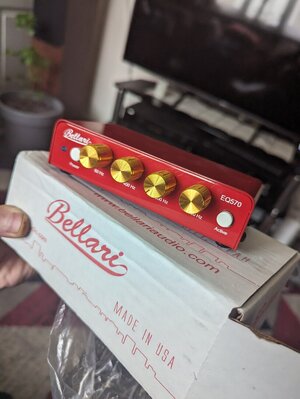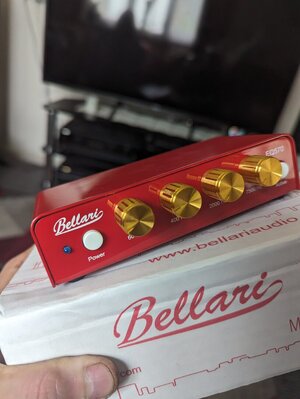I saw definitive proof of the wire debate proved nonsense as said prior in the much too long cable debate (arguement)
My old father saw me as a 20yr old purchase fancy speaker wire and after making a boast he hastily disappeared into the loft/Aladdin's cave of sadly mostly lost vintage electronic gear of his.
He reappeared with his ocilosope and something else attached then put it all to bed for me.
There was no dicernable difference between the stuff I'd been sold by a hifi shop to the stuff he had lying around.
He went into detail after that with a much too long lecture (as I saw it as a 20yr old) in why this was but I don't want to bore you 😐
Rather this link explains (too much of) it 😂 scientifically and definitively, it should (but won't I suspect for some) finally put it to 🛏️
Waldo Nell
https://www.waldonell.com › ...PDF
The Real Science Behind Audio Speaker Wires
I find the conclusion in-line with my thoughts......
"Conclusion
This article intended to show some science behind speaker wires. It is not there to
convince you not to buy uber expensive cables. In the end the decision is yours. I
merely wanted to make you aware that there is a lot of snake oil, misconceptions,
ignorance and down right lies in the industry - both from manufacturers and your
trusted audiophile experts at your local shop, but now you know the truth. At least,
when spending the price of a small car on cables, know you are doing so in order to
waste money and have bragging rights rather than to alter the sonic performance of
your system in any perceivable way.
Use common sense when purchasing equipment. Ask questions, and question the
responses. If the responses include a lot of technobabble - walk away. Nothing in the
audio world should need to be explained in technical detail to convince you to buy
it. Listen to it - blindfolded - and make up your own mind. If you cannot hear a
difference between a $5000 system and a $50000 system, buy the $5000 system. Use
the rest to spend on wine. But make sure you do a double blind, or at the very least
single blind test. That means - make sure you honestly do not know which system
you are listening to when doing an A/B comparison. This is the only way to not
have the placebo effect ruin your decision making abilities.
If you can't be bothered to read the science and I don't blame you 🥱 there are some "REAL" and important things to consider which do effect a wires behaviour first is-
• Guage.
• Wire length ( often overlooked especially in the AV world keep it equal).
And
•A good "Connection".
(I've found personally bare wire connections are as good as any but for convenience and to stop oxidation soldered banana plugs are handy)
After that what you hear is down to your equipment.
Back to/on topic 😁
The "Bellari EQ 570" has arrived and I must say is a quality all metal construction.
The dials are resistive and silky smooth to turn, it's a heavy little thing smaller than my Google pixel pro mobile phone length and width but much thicker.
I like the option to completely run music uninterruptedly through the EQ with the push of a button when it's not needed.
I've had one once that had to always be on with my djay decks otherwise the signal was broken, even with that particular EQ zeroed when not in use it always had a detrimental effect on the music quality.
The "excellent" in depth reviews and complete tear down here-
https://community.klipsch.com/index.php?/topic/203557-bellari-eq570-analog-eq-measurements/
And it's gathering good reviews here-
Audio Science Review (ASR) Forum
https://audiosciencereview.com › f...
Bellari EQ570–WOW WOW WOW
It caught my attention when looking into sidestepping the long consultation with a laptop, microphone and being a contortionist that Dirac is.
I've never been happy with the results in comparison with it switched off despite going way to far in depth with it.
I found solving one issue using Dirac created another with something else.
Giving to one aspect of sound to take away from another but always managing to somewhat mask the amps much preferred natural sound.
I would of tweaked even further and their might indeed be a way of getting it right thus joining the Dirac fan club but realised after far too long and many (2😁) nights it had become a chore.
To my fiancée's delight I actually found and much more enjoyed putting up 2 cheap sliding doors to block the odd shaped alcove off which was the obvious problem, turning it into a now much needed wardrobe in the listening room/bedroom.
Well it's now the bedroom/listening room in that order now since my fiancée moved in 🤯
I bought the EQ as I simply want to bleed a little bass out with certain songs that's it, since swapping to the much bigger speakers I love.
Other than that I much prefer the amps natural sound that I like it for.
I know Dirac has a function to take out bass, but I've always missed the older ways of much more commonly including a simple placement of rudimental tone controls on an amp.
It has been my experience that Dirac with hifi has its uses but messing about with phasing etc isn't ever going to replace the better positioning of speakers or even free/cheap rudemantery room treatments !to my ears!
In AVR with 6 speakers or more, if they need phase correction the results are much better if not a must have.
I've found it a disappointment in hifi for me especially after somewhat knowingly being led to believe that it was HIFI's incarnation Gandalf.



